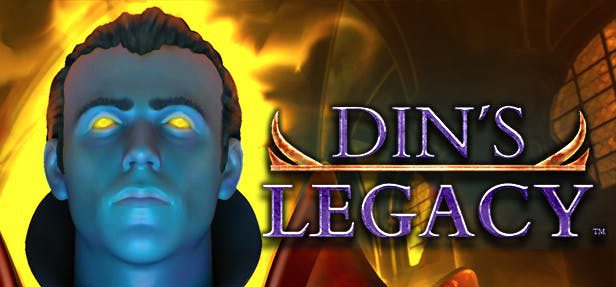An idiosyncratic but ultimately conservative ARPG. Rough around the edges, but with enormous replayability and worth looking at for lovers of the genre.
Type: Single-player
Genre: ARPG,
Tower Defense, Mythology
Developer: Soldak Entertainment
Publisher: Soldak Entertainment
Release date: 28 August, 2019


Intro
Din’s Legacy is the latest in Soldak Entertainment’s series of ARPG of the likes of Diablo.
Although I have not played their previous games, it seems clear that each game attempts to both build upon the previous games and take it in a new, wild, direction.
This is a tough game to review. First, the Soldak has an extremely insular community of ardent followers who have spent hundreds of hours in previous games and know the foundations well enough to make the transition to newer games fairly smooth. A newcomer, however, will see many vestigial systems that are hard to play with at first and understand. Secondly, I’ve been finding the ARPG genre to be fundamentally flawed (you can read my Titan Quest review where I go over those aspects in more detail). Din’s Legacy seemed one possible answer to my concerns – in the end, however, it was not. But it was a step in the right direction.
I will write the conclusion right now since what follows may be of little interest to most players. Din’s Legacy is a solid ARPG. The main difference is how it throws the “skill tree” idea out the window and, instead, lets you change class virtually at any time, keeping all your previous abilities and unlocking new ones. This obviously leads to a combinatorial explosion in the number of builds you can have.
The game lacks structure, however. It has no story (beyond a frame). The scenarios and dungeons are all procedurally generated, with different world events and win/lose conditions. Everything is at your control, including the difficulty and size of the scenarios. This means that you can replay the game for a ridiculously long time – but the game does nothing to pull you in. It’s an ARPG sandbox that will appeal to fans of the genre and give you a bit of a different taste within a conservative framework.
Now I will go over the game’s mechanics and problems in general, and then dive into my more general ARPG critic and how the game addresses them.
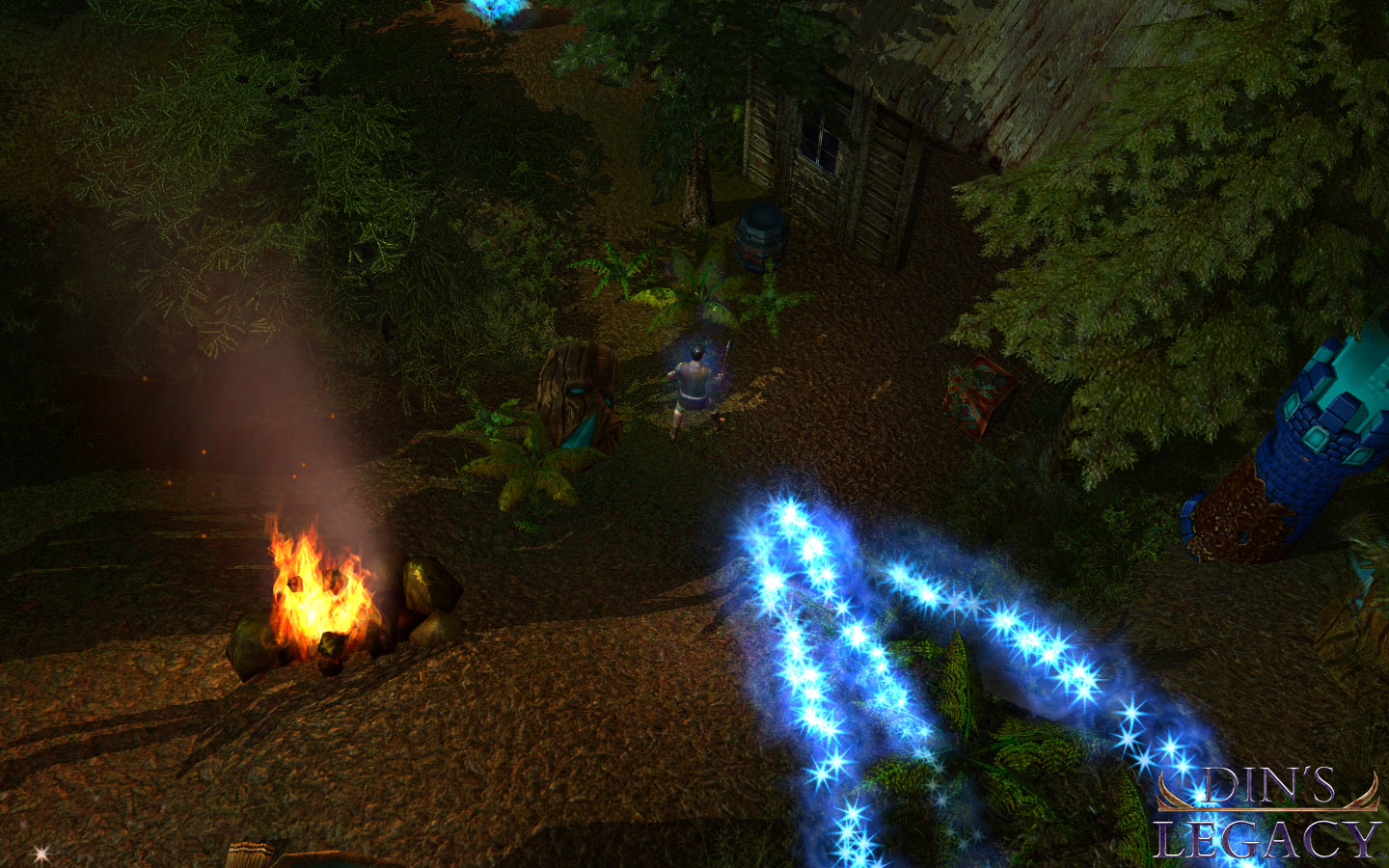
What the game is
If you’ve played Diablo, you know more or less how this game plays. You point and click to walk and attack. You have dungeons several levels deep (or high), you kill enemies, you kill stronger enemies, you get random loot of increasing rarity and power, you level up your attributes and skills. You kill enemies, then you kill more enemies, and repeat ad infinitum.
How is Din’s Legacy different? Well, as I’ve mentioned, you can change class at will. You need to spend “mutation points” to change class, but those are so abundant that it hardly limits anything. There are dozens of classes to choose from, but some seem largely a different combination of skills from different classes.
What happens when you change class? You keep every ability into which you have spent skill points (“active” abilities from now on). All other abilities are removed and replaced with abilities from the new class. You can’t use them without first investing the skill points. Also, you don’t hold an infinite number of abilities, so you may not get the ability you were looking for – you can mutate until you get the new skill.
The above is the heart of the game. Beyond that, there are many smaller systems.
For example, skills can mutate. Maybe your fireball will now trigger an explosion when it kills an enemy, with a 10% chance. Or maybe it sends out chain lightning. These are, unfortunately, completely random and independent of class – any of your active abilities can mutate, and the effect comes from a universal pool of possible mutations. There are also character mutations (independent of abilities), which can be positive or negative. You can spend skill points to remove mutations, or to amplify their effect. Another aspect I dislike is how you can only spend points to increase damage. It would be cool if there were other modifiers like range, trigger chance, and so on.
You have a town to protect. You get quests from your town. Sometimes you can recruit NPCs to your town to buff your abilities (and your townsmen’s). The town can also be attacked by monsters and clans (other towns). Your town has 4 doors which can break and may have stats. There are also relics to buff the town. You can also equip every single member of your town with the loot you get.
There is a crafting system where you dismantle items to get raw materials to repair, change rarity, add gem sockets, add enchantments, etc. to items; this is extremely bare-bones, however, and you don’t have enough control over.
The enemies become stronger each time they kill you (not unlike Shadow of Mordor’s orcs). Some enemies are nemesis who send other enemies to kill you, open portals to attack your town, summon groups of enemies to a certain area of the map, taunt you, etc.; there’s a lot of stuff!
There are clans. Clans have towns like yours. Each clan has different attributes. Some are aggressive while others are defensive. Some will betray you. You can trade items between clans, improve relations by completing quests or recruiting one of their NPCs to adventure alongside you. Clans will ask you to ally with them to defeat another clan. You can declare war and attack them, while also risk being attacked in turn. You can send raids into other towns. The system is quite complex, but honestly not very relevant (to me, anyway). I’ll get into it later.
There is probably a lot more I’m forgetting, or maybe haven’t seen at all.
Then there are the scenarios.
They can go from as simple as a single floor with a single boss in it, to a huge map with 8 clans that you need to defeat (by yourself, or by “playing roman” and using each clan to fight another). Some require you to find a single NPC on a big map. Some require you to destroy all the God’s altars. There are other modifiers you can add like de/increased number of enemies, de/increased strength of enemies, removing clans, making enemies fight each other, etc. etc. etc.;
You can choose a scenario from a list only after you’ve beaten it. Before then, you need to randomize the scenario to unlock new ones.
I think you get the idea. There are many systems in the game, many of which seem to have originated in previous games, but carried into the later ones in a vestigial form. Town and clan management was apparently the main feature in Zombasite, but more focused on survival and probably more complex.
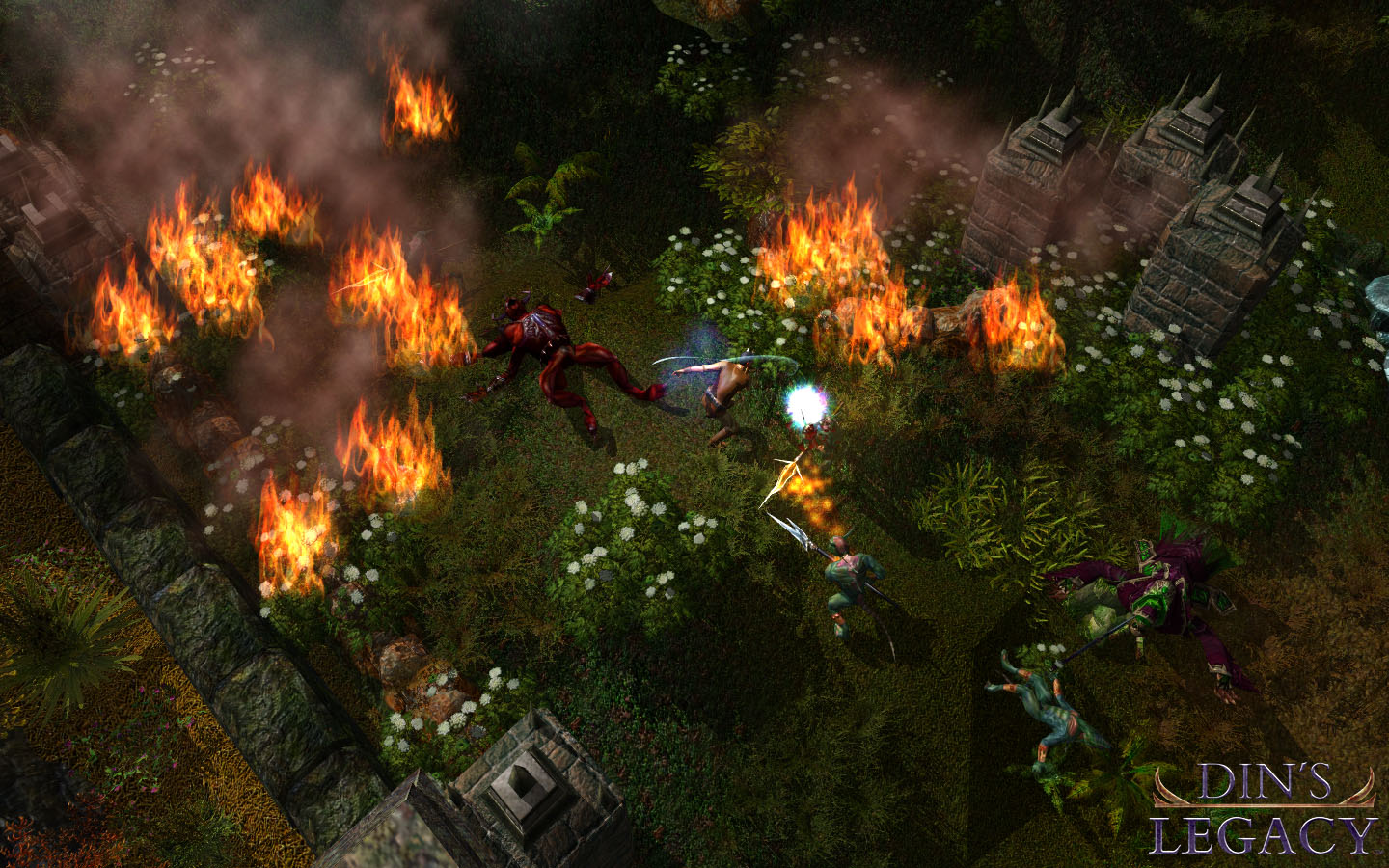
Presentation
This is certainly the biggest problem with the game for mass appeal.
Visually, it has neither the fidelity of most modern ARPGs (even Titan Quest looks significantly better) nor the style of old Diablo games with the lit sprites. It doesn’t look terrible, but it’s certainly no treat for the eyes.
The music, too, doesn’t feel very inspired.
By far the biggest problem, however, is the UI. It lacks the polish necessary to make things easily readable (and I know how much work interfaces need to be smooth) and the game’s complexity doesn’t help with that at all! Just
identifying the relevant information is often daunting.
This probably stems from the isolated community – people are already familiar with systems from previous games, which makes everything easier to parse and navigate. Newcomers, however, encounter an early wall.
That said, if you get past the wall and are willing to ignore the rough edges, there is something worthwhile in Din’s Legacy!
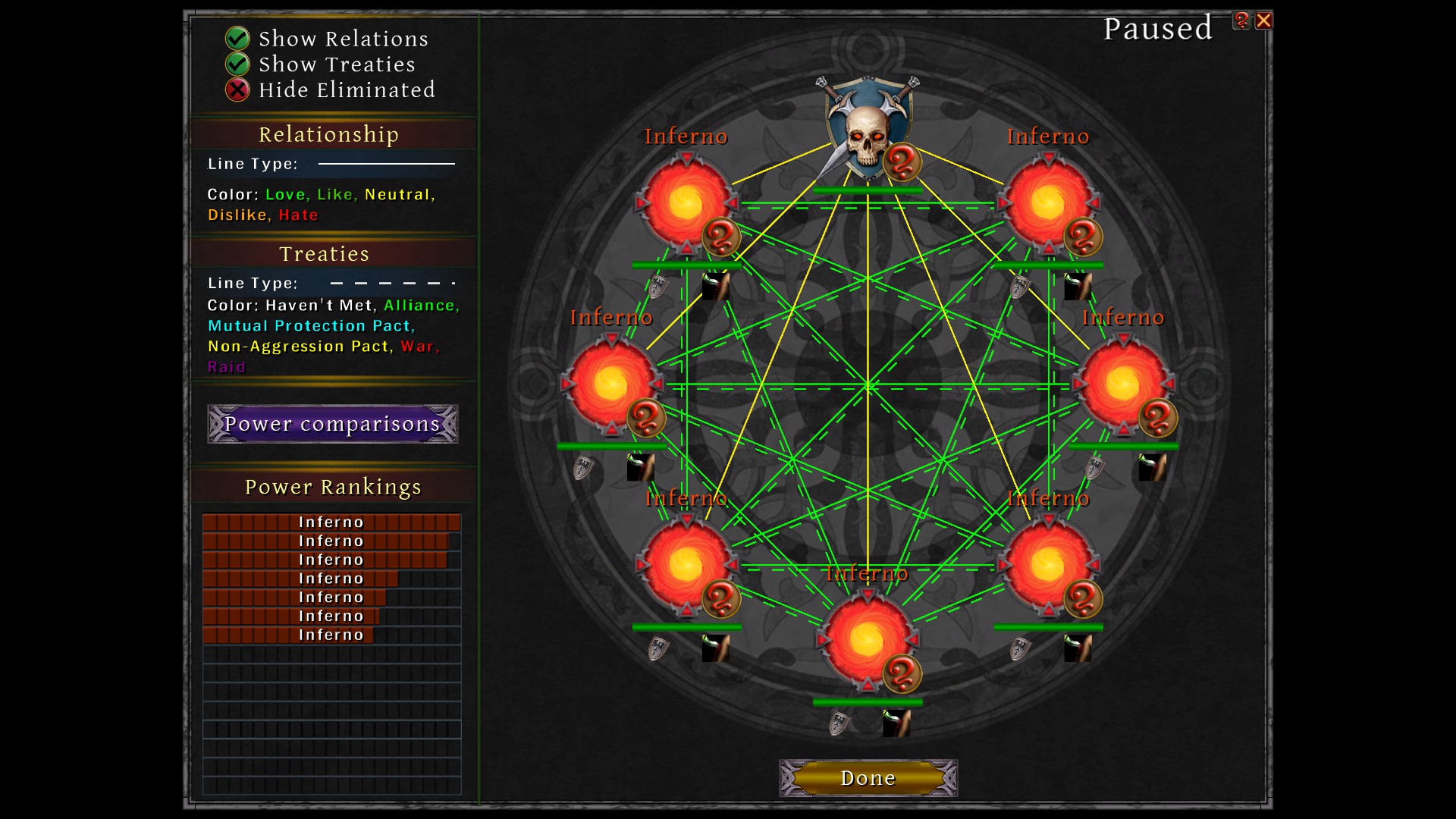
The problem with ARPGs
I have a love-hate relationship with ARPGs. I find the basic combat really fun, and I like the isometric perspective a lot. That said, I typically start getting bored after 5 hours. It seems that they never have enough interesting
decisions to sustain my interest in them for very long. And the worlds are often merely a façade, with fetch quests to keep the engine going for a ridiculously long time. The game’s are too padded. I’ll write about three major problems I
have with the genre, and then how Din’s Legacy addresses them.
(1) Long loop
For me, ARPGs are at their peak when you’re trying new builds and seeing how they melt enemy crowds. Unfortunately, this is not actually a feature in most of them! The skill trees are often permanent and padded – you can’t respec
(without cheating) and it takes several dozens of hours to level up all the abilities properly. Early abilities are also often useless in the late game, since upgrading high-level abilities makes them disproportionately better
than low-level abilities.
This also means that, unless you’re a hardcore fan of the genre/game and play it for hundreds of hours, you’ll only see a tiny bit of the fun builds, because they take too long to get somewhere.
(2) Filler structure
This has been a problem in every single ARPG I’ve played. The story is almost non-existent, and the game boils down to revealing whole maps, dungeons with many floors, and killing every enemy. And you do this over and over and
over again. If you’re lucky, there’s a change of scenery, but that’s largely it.
(3) Planning instead of responding
This, to me, is the biggest problem, and is largely related to (1). It’s difficult to balance the difficulty of ARPGs beyond enemy numbers and stats. Torchlight also had important elemental damage/resistance that contributed to the problem. What this means is that most of the time the game will be pretty easy, until the difficulty changes and the enemies simply become stronger than your build. This has only two solutions: grind for loot, or grind for levels.
Because of the fixed nature of the skill trees, you don’t have much of an option to experiment with a different build (unlike, say, Mages in Baldur’s Gate which I now love).
Because there is so little ability to respond to new challenges, the games are also limited in what they can throw at the player without being unfair – which aggravates (2) as well, homogenizing the level design.
I suspect that the vast majority of ARPG players rely on builds that hardcore players have tested rather than playing blindly (with success) or actually testing different builds.
Ok, does Din’s Legacy solve any of these problems?
Well, it takes a few good steps in (1) and (3), but not quite enough, and the solution is rather blunt.
Letting you change class at any time gives you a lot more ability to respond to challenges. If something isn’t working, you can always try something new. The game also lets you recover points from skills to avoid major grind.
Unfortunately, the loop is still quite long – skills must be upgraded multiple times, and each point spent increases the amount of points you need to increase it again. What this means is that it takes a lot of skill points to
merely keep your current build “afloat” in terms of levels, and requires many points to get a new skill up to snuff. Fortunately, the base skill is by far the most relevant, since leveling skills gives only fairly small bonuses.
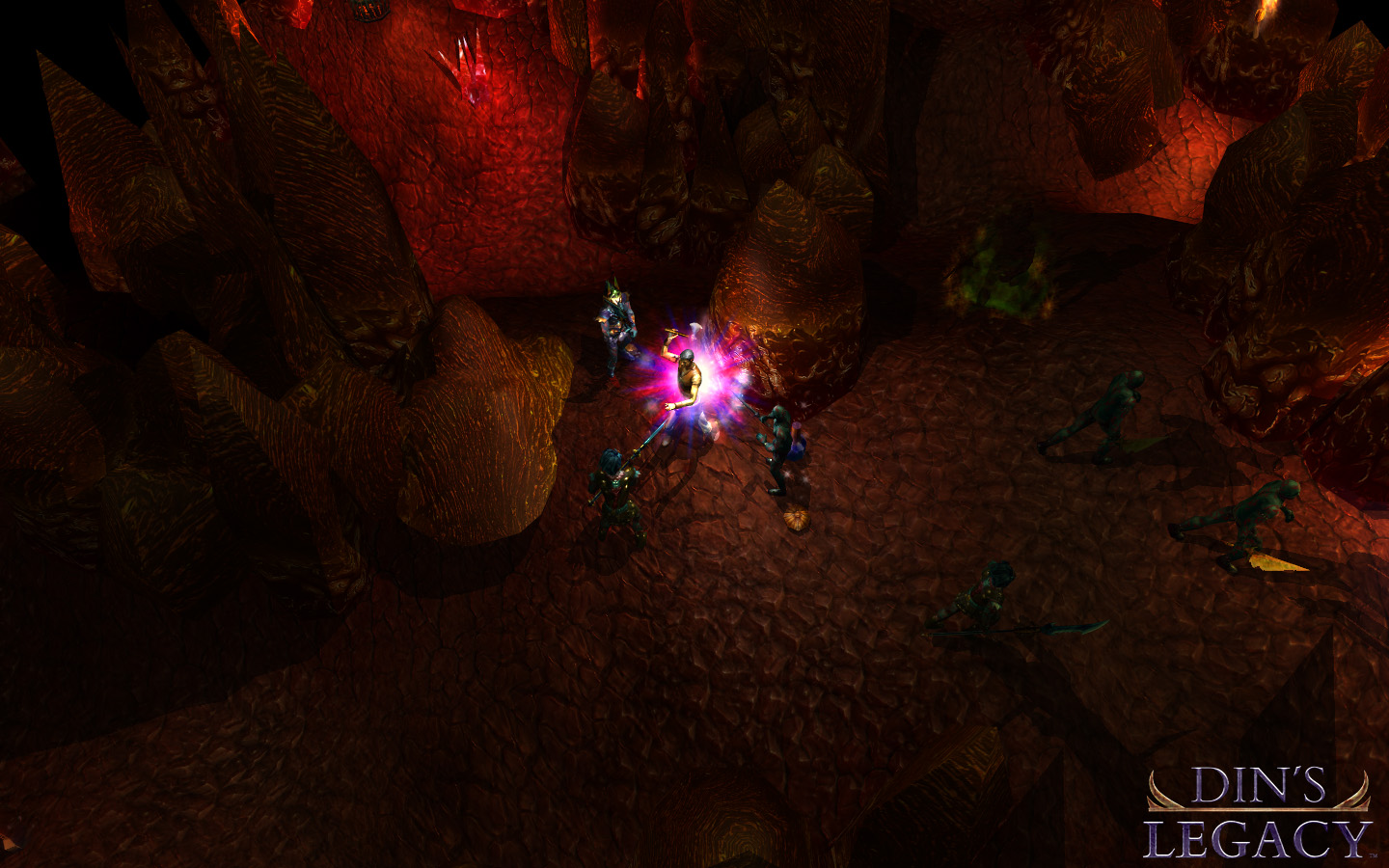
Lack of structure
The biggest problem with the game itself is being a sandbox. It gives you too many degrees of freedom and there aren’t many interesting decisions to make most of the time.
For example, the game revolves amount playing through many different scenarios – you can imagine these as short, randomly generated campaigns without narrative (though there can be a dynamic story by each clan’s and elite monster’s actions).
Here, you have control over everything. You choose the difficulty (by setting the level of the monsters relative to your own), the size of the map, the clan relations, the monsters’ aggression, their number, their strength, etc.; you
have everything under your control.
With the classes, too. You can mutate from any class to any other class at any time. This means you can very easily get whatever skill you want and reach whatever goal you have through a very direct path.
What this means, however, is that the burden of discovering interesting combinations is entirely on the player. Games typically set certain challenge goals that you try to reach by exploring whichever combinations you have available.
But this doesn’t quite work when the goal is this fluid. You don’t even know if a certain challenge is possible. So, if it seems too difficult, you lower it. But what prevents you from lowering too much?
It is also easy for players to stick with a single build that is working out well and not branch out.
To me, it’s like finding a good book in the Library of Babel. Sure, it has every great book across space, time, language, you name it. But finding it is extremely difficult, since most books are gibberish.
Din’s Legacy doesn’t suffer as much from gibberish, but the principle is the same. I think it gives too much freedom and lacks design in favor of the sandbox approach. Unfortunately, it also means that the game doesn’t try to entice new players. It’s there for the hardcore players who really like to take ARPGs to their limits, with all the liberty they wish.
It is still a solid ARPG that most players can enjoy, but I feel like the true value of the game will only be available to the veterans. It preaches to the choir.
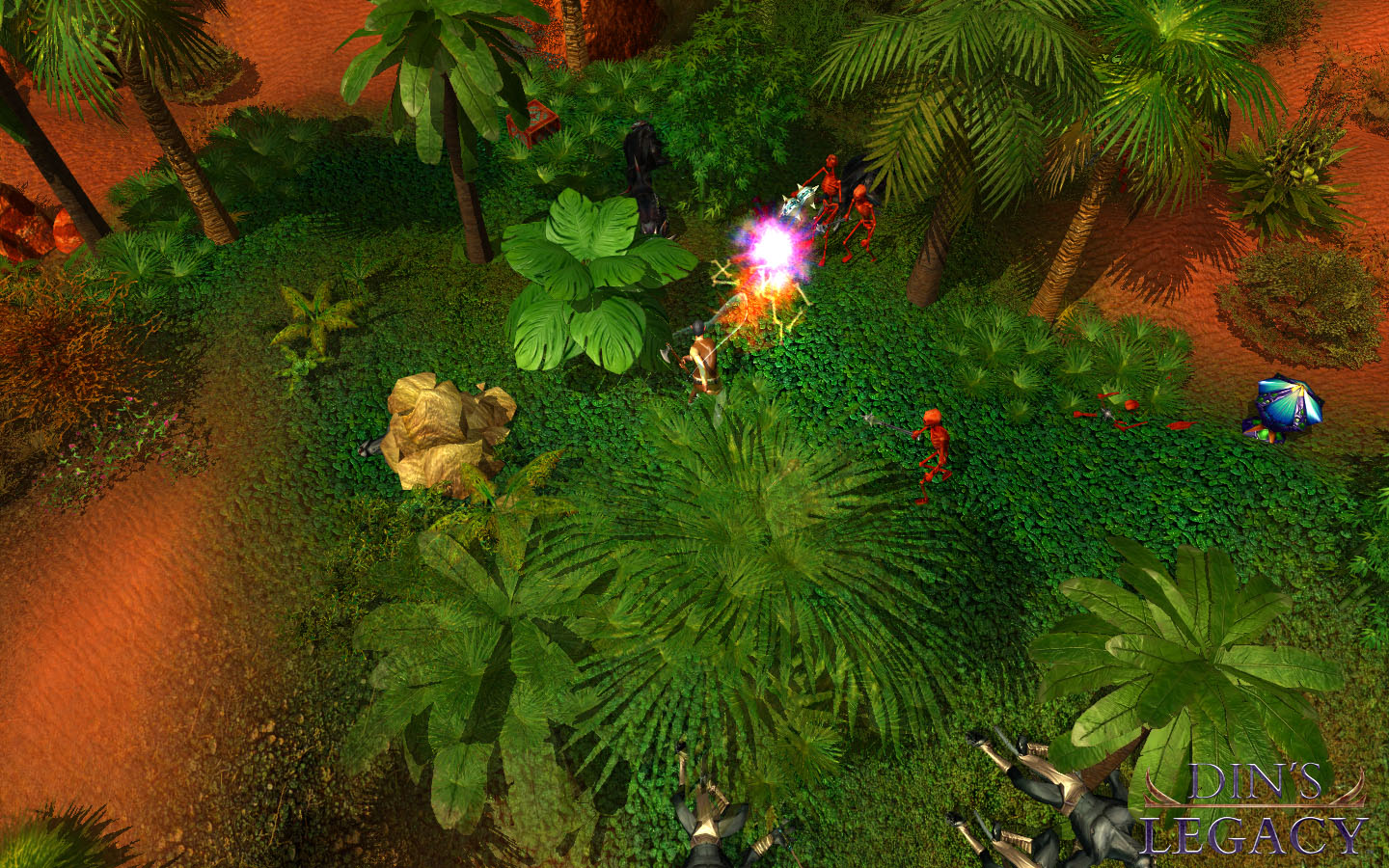
Back to rogue?
Diablo was heavily influenced by a game called Moria. It’s a rogue-like – one of the real ones in ASCII, turn-based and so on. Times have changed. Rogue-likes still exist, but rogue-lites have really popped off. The ARPG genre,
strangely enough, remains one of the most conservative. There are few innovations and a lot of baggage carried from one game to the next.
I have to propose this again since I think the idea has merit – and it fits Din’s Legacy general idea.
The Binding of Isaac is probably the landmark rogue-lite, to me. The reason for it to work so well is that it has a very rich combinatorial structure: many unique items that interact with one another leading to a huge number of
potential builds, and also many different ways of taking advantage of randomness and directing it (from items that alter item pools, to playing arcade machines for consumables and items, to spending bombs looking for secret rooms,
to sacrificing HP for devil items, etc. etc.). This only works through shorter game times – you can finish a run in 30-90 minutes, most of the time, instead of 15-30 hours.
This achieves two things. First, there is a lot more density in decision-making. Instead of spending one hour mindlessly clearing a map like every other, you are constantly making small decisions that all influence your success in the
end. Secondly, given its replayability, it gives you the chance to see a lot more of the game. You come across many more interesting builds, since you never have complete control. And this is an extremely important point! You
have to try new things and, in the process, come across builds you would never have tried before that still happen to work very well.
The mutation and class systems in the game would benefit the most from a redesign. Skill mutate completely randomly, leading to neither choice nor planning – your only action is to spend points to remove a mutation or to keep it.
Similarly, making every class available all of the time can be overwhelming and discourage exploration – if you have something that works, why change it? Constraining class would go a long way of making the game more interesting,
to me. And it makes sense given that some classes share several skills. But anyway.
The biggest difficulty would be in redesigning the structure of the ARPG. The random dungeons are already there, but they are invariably boring. Still, I believe it would be a worthwhile design problem to solve.
Of course, Din’s Legacy isn’t going to adopt any of this anytime soon. The game, as it stands, has a lot of potential, but almost no tools to exploit that potential. It’s a sandbox. That said, Soldan Entertainment are known to
make games iteratively, so perhaps it would be a good direction to take in some future game.
Verdict
Well, I certainly went off the rails. Good job if you put up with all of this, so far.
I enjoyed my time with Din’s Legacy. The game was difficult to get into at the start (due to the rough edges and opaqueness of the systems) and became quite dull halfway through because I didn’t realize there were scenarios to
unlock and was playing the same ones over and over. Once I figured that out, the game got interesting again! For a while, anyway. Ultimately, most of the scenarios played very similarly (whatever the win condition was, you had
to find and kill things somewhere on the map) like most other ARPGs.
While the game does have several refreshing aspects, it played more conservatively than I expected.
It’s still a different ARPG and one worth trying if you’re a fan of the genre. I would especially recommend it to veterans who like to go deep on the different builds, since this is where the game has the most potential.
I don’t think I will play it again in the future. That said, I’m very interested in seeing Soldak Entertainment’s other games! Not only the next games, but the previous ones as well. And, given the passionate, if isolated,
community, I suspect they are an acquired taste.

